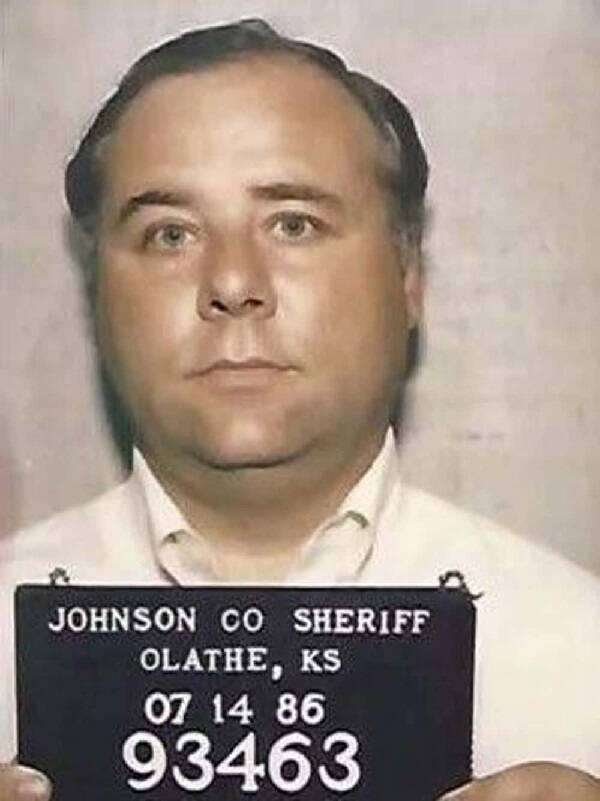John Edward Robinson met most of his eight murder victims through chat rooms in the early days of the internet, including BDSM forums where he recruited sex slaves.

Missing PagesJohn Edward Robinson in his earlier years, presenting the façade of a professional and family man.
On the surface, John Edward Robinson was a typical Midwestern family man. He was married, had four children, and was active in his community. But beneath that respectable image, Robinson lived a secret double life that would later expose him as one of America’s most manipulative and calculating serial killers.
For nearly two decades, Robinson targeted women who were vulnerable, financially desperate, or simply looking for connection. Some were promised jobs and stability, while others believed they had found love. Instead, they disappeared — and their bodies were later found on Robinson’s property.
By the time authorities uncovered his crimes in 2000, Robinson had started using online forums to find and control his victims, earning him the chilling title of “the Internet’s first serial killer.”
John Edward Robinson was ultimately sentenced to death for killing eight women and teenage girls between 1985 and 2000 — but investigators believe he may have murdered even more victims who haven’t been discovered yet.
The Early Life And Crimes Of John Edward Robinson
John Edward Robinson was born in the suburbs of Chicago in 1943. He had a promising childhood, achieving the rank of Eagle Scout and traveling to London with fellow Scouts to sing for Queen Elizabeth II at the Palladium theater. He even met Judy Garland backstage.
However, Robinson frequently got into trouble at school, fought with other boys his age, and didn’t excel academically. He dropped out of a radiography program after high school and ultimately moved to Kansas City, got married, and started a family.

Missing PagesYoung John Edward Robinson, years before anyone suspected what he was capable of.
To outsiders, Robinson’s relationship with his wife and four children seemed stable and loving. He worked various jobs in healthcare and business to support the family, but behind the scenes, he was forging checks and falsifying documents. In 1969, he was arrested for embezzling $33,000 from a medical practice using fake credentials and was sentenced to three years of probation.
But this brush with the law didn’t slow John Edward Robinson down. In fact, it just taught him how to be more careful.
John Edward Robinson’s First Victims
In the 1980s, Robinson’s crimes took a dark turn. He began preying on women who were seeking employment or housing, often under the guise of legitimate business opportunities.
In 1984, 19-year-old Paula Godfrey vanished after Robinson offered her a sales position at his fictional consulting firm. Her loved ones later received letters — allegedly from Paula — claiming that she was fine but didn’t want to see her family. Investigators suspected the letters were forged by Robinson, but without physical evidence to back up their suspicions, they couldn’t prove it.
The following year, Robinson met a 19-year-old single mother named Lisa Stasi at a Kansas City homeless shelter. He fabricated a program that he claimed helped struggling young women and promised Stasi job training and a place to stay. He put her up in a motel with her infant daughter, Tiffany, but a few days later, Stasi called her mother-in-law in a panic, saying that a man named “Mr. Osborne” wanted her to sign four blank pieces of paper. That was the last time her family ever heard from her.
After murdering Lisa and kidnapping four-month-old Tiffany, Robinson forged adoption papers and gave the infant to his brother and sister-in-law, Donald and Helen Robinson. He convinced them that the child’s mother had taken her own life and that baby Tiffany needed a home. He also charged them $5,500 in “legal fees.”

YouTubeJohn Edward Robinson holding Tiffany Stasi just after murdering her mother.
For years, the family raised Tiffany, renaming her Heather Robinson, but they were unaware of her true identity and of the circumstances surrounding her mother’s death. It wasn’t until Heather reached adulthood that she learned that her biological mother had been murdered by the man she knew as her uncle.
In 1987, 27-year-old Catherine Clampitt disappeared after responding to an advertisement for a position at Robinson’s consulting firm. Like the women before her, she had been promised financial stability and travel opportunities. She hasn’t been seen since she left her house for a meeting with Robinson that June.
That same year, John Edward Robinson was imprisoned for fraud. He remained behind bars until 1994 — but while he was incarcerated, he met Beverly Bonner, the prison librarian. After Robinson was released, Bonner left her husband to be with him, even though he was still married. She was never heard from again.
Around the same time, Robinson discovered a new method of luring in unwitting victims.
Becoming The ‘Internet’s First Serial Killer’
In the 1990s, the rise of the internet offered Robinson a fresh way to deceive women. He joined online BDSM chat rooms, where he used the name “Slavemaster” and presented himself as a dominant man seeking submissive partners. Through these chats, Robinson lured women into trusting him to provide companionship and financial support.
His first known online victims were Sheila Faith and her 15-year-old daughter, Debbie, who had spina bifida and used a wheelchair. Robinson claimed he was a philanthropist and businessman and offered Sheila a job and financial aid if she would move to Kansas City from California. In 1994, Sheila agreed — and she and Debbie immediately vanished.

Johnson County Sheriff’s DepartmentJohn Edward Robinson in a 1986 mugshot, years before investigators uncovered his murders across Kansas and Missouri.
Another victim was 21-year-old Polish immigrant Izabela Lewicka, who later moved to Kansas City from Indiana to be with Robinson. She told friends she was in a consensual BDSM relationship and that Robinson had promised her a future together. In reality, John Edward Robinson had Lewicka sign a “slave contract” with 115 rules that gave him complete control over every aspect of her life, from her finances to her daily activities. Not long after their 1999 meeting, Lewicka vanished without a trace.
Then, a 27-year-old nurse named Suzette Trouten agreed to become Robinson’s sex slave. As reported by Vanity Fair in 2013, she called her mother not long after moving to Kansas City and told her, “Everything’s fine. John is nice. I’m not as lonesome as I thought I’d be.”
Trouten vanished shortly after.
Behind the scenes, Robinson meticulously maintained the illusion that his missing victims were alive and well. According to court documents, he would forge letters, emails, and even phone calls in their names, often using information he had learned from online conversations or personal documents. These deceptions allowed John Edward Robinson more time to continue his crimes undetected.
By 2000, however, investigators realized that his name was connected to multiple missing persons reports. And after a woman filed a sexual battery complaint against him that spring, the police had what they needed to search his property. What they uncovered was far worse than anyone could have imagined.
John Edward Robinson’s Trial And Conviction
On Robinson’s rural property in Linn County, Kansas, authorities opened two metal barrels and found the decomposed bodies of Izabela Lewicka and Suzette Trouten. Their remains had been sealed inside for months.

ABC/20/20/FacebookThe victims of serial killer John Edward Robinson.
A subsequent search of a storage unit in Missouri led to three more barrels containing the bodies of Beverly Bonner and Sheila and Debbie Faith. This discovery linked Robinson to at least five murders.
As investigators pieced together the evidence, they connected Robinson to even more disappearances, including those of Paula Godfrey, Lisa Stasi, and Catherine Clampitt. While the remains of these women were never found, the pattern of manipulation surrounding their cases was eerily similar.

Kansas Department of CorrectionsJohn Edward Robinson is on death row for his heinous crimes.
John Edward Robinson was ultimately found guilty of the murders of Trouten, Lewicka, and Stasi and sentenced to death. He later pleaded guilty to killing his other five victims in order to avoid an additional death sentence. He remains on death row to this day, and he has never expressed remorse for his unfathomable crimes.
After learning about the crimes of John Edward Robinson, read about notorious serial killer Ted Bundy. Then, check out this article on 33 of the worst serial killers in history.





